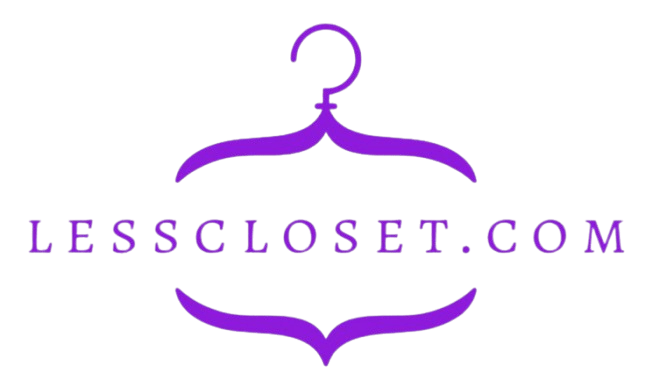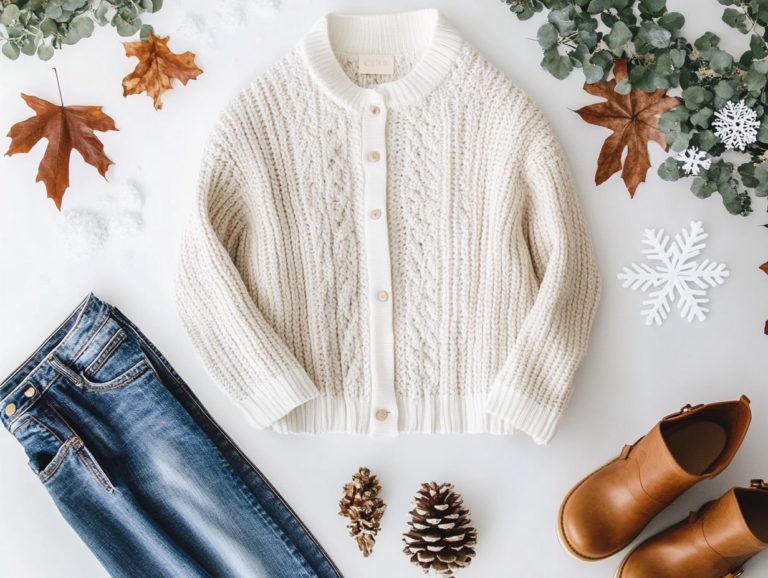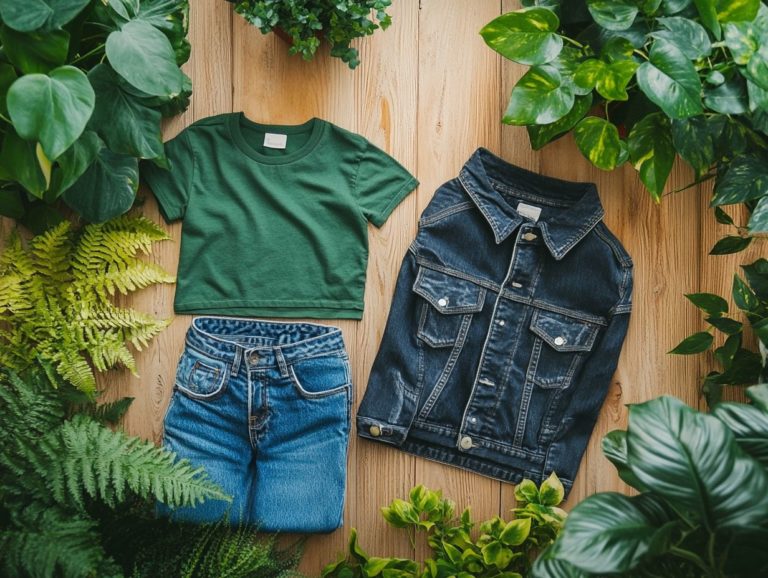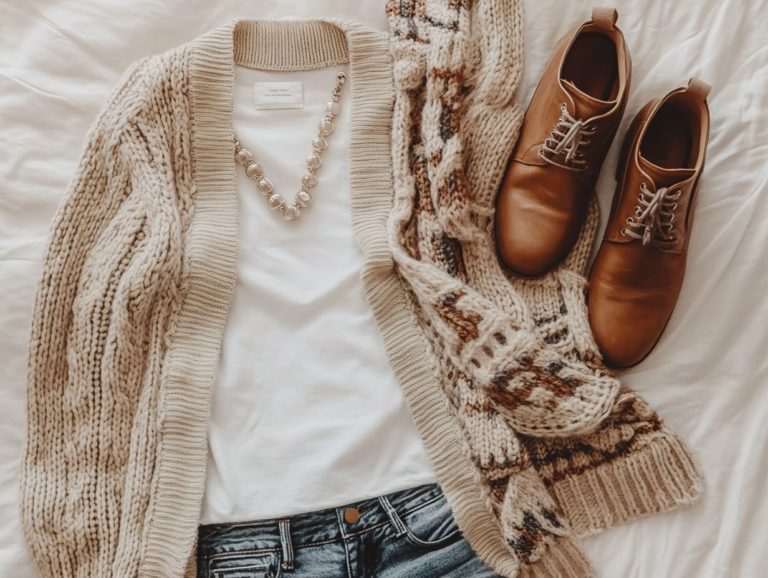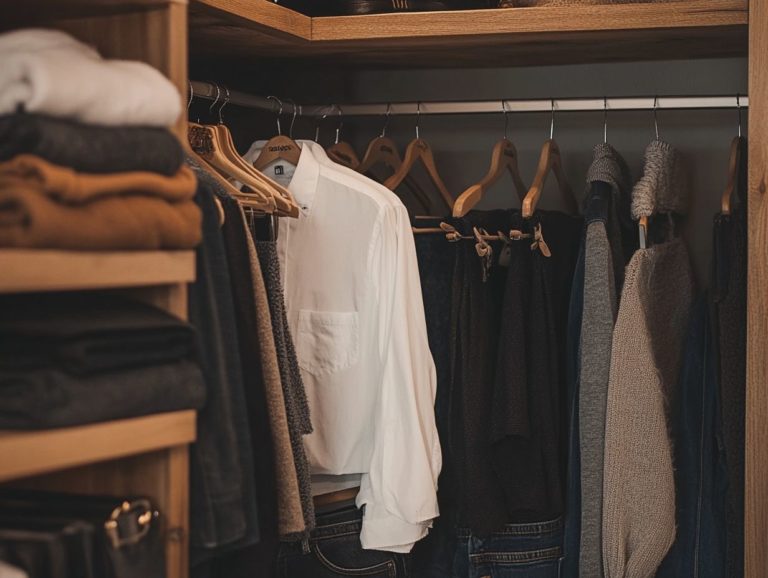Essential Clothing Items for Sustainable Wardrobes
In today s fast-paced fashion landscape, the concept of an eco-friendly closet is gaining traction as you seek to make thoughtful clothing choices.
This guide delves into the essence of an eco-friendly closet, illuminating the benefits of sustainable fashion for both the environment and society. You ll discover wardrobe essentials that offer versatility and longevity, alongside insightful tips for mindful purchasing and caring for your garments.
Whether you’re aiming to transition your closet or are simply curious about sustainable fashion, this guide will empower you to curate a wardrobe that beautifully reflects your style and values.
Contents
- Key Takeaways:
- What s in an Eco-Friendly Closet?
- Why Choose Sustainable Clothing?
- Essential Clothing Items for Sustainable Wardrobes
- Tips for Building a Sustainable Wardrobe
- Transitioning to a Sustainable Wardrobe
- Steps to Take for a More Sustainable Closet
- Frequently Asked Questions
- What are the must-have sustainable clothing items?
- Why is it important to have sustainable clothing in our wardrobes?
- What are some examples of essential clothing items for sustainable wardrobes?
- How can I incorporate essential clothing items for sustainable wardrobes into my current wardrobe?
- What are some sustainable materials to look for in clothing?
- Can sustainable clothing be stylish and trendy?
Key Takeaways:
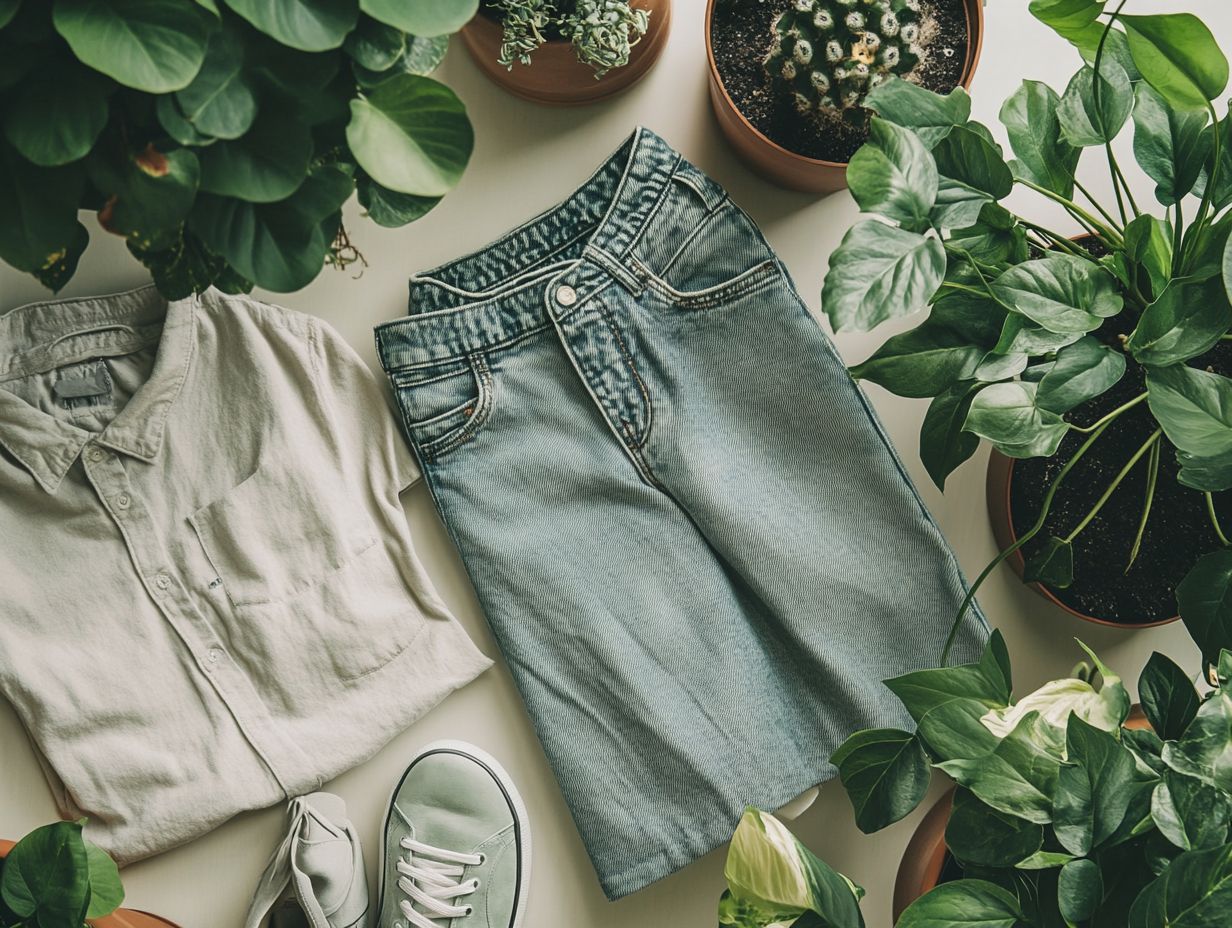
- Sustainability means making eco-friendly choices that reduce harm to the environment and society.
- Essential items for an eco-friendly closet include versatile and eco-friendly materials that can last a long time.
- Building an eco-friendly closet requires conscious shopping choices and proper care for your clothing. Transitioning to an eco-friendly closet is a gradual process that involves taking small steps.
What s in an Eco-Friendly Closet?
An eco-friendly closet is your carefully curated collection of clothing that emphasizes ethical practices, eco-friendly materials, and timeless style. By prioritizing these elements, you significantly reduce your environmental impact while supporting the well-being of both people and the planet.
This approach encourages mindful clothing choices, ensuring that each piece you add contributes positively to a sustainable fashion ecosystem. By embracing garment durability and incorporating second-hand finds, you can collectively lower your carbon footprint, combat clothing waste, and promote responsible consumption patterns within the fashion industry. For a great start, refer to the essential capsule wardrobe checklist.
Why Choose Sustainable Clothing?
Sustainable clothing presents a wealth of benefits, not only for the environment but also for societies and individuals. It stands as a pivotal choice in today’s fashion landscape.
By addressing the societal costs linked to the fast fashion industry, sustainable clothing enhances the durability of garments and champions eco-friendly materials. This shift encourages a more conscious consumer culture that prioritizes quality over quantity, allowing you to make choices that resonate with your values.
Environmental and Social Impact
The impacts of the fashion industry are significant, with fast fashion being a major contributor to clothing waste and carbon emissions, further intensifying climate change. As you become more aware of the substantial environmental costs tied to your clothing choices, a growing shift toward sustainable practices is likely to resonate with you.
This transformation invites you to conduct wardrobe audits, assessing what you genuinely need and what can be donated or repurposed, fostering a sense of fashion accountability. By embracing upcycling, you can redefine old garments while reducing the demand for new production a process that often consumes vast resources.
Transitioning to more sustainable clothing options allows you to help mitigate textile waste and greenhouse gas emissions while supporting fair labor practices. This ensures that workers are treated ethically and compensated fairly.
By adopting such conscious consumer behavior, you can truly make a tangible difference in the fashion landscape, promoting a healthier ecosystem and stronger communities.
Join the movement towards an eco-friendly closet today! Learning how to choose timeless wardrobe essentials can make a huge difference!
Essential Clothing Items for Sustainable Wardrobes
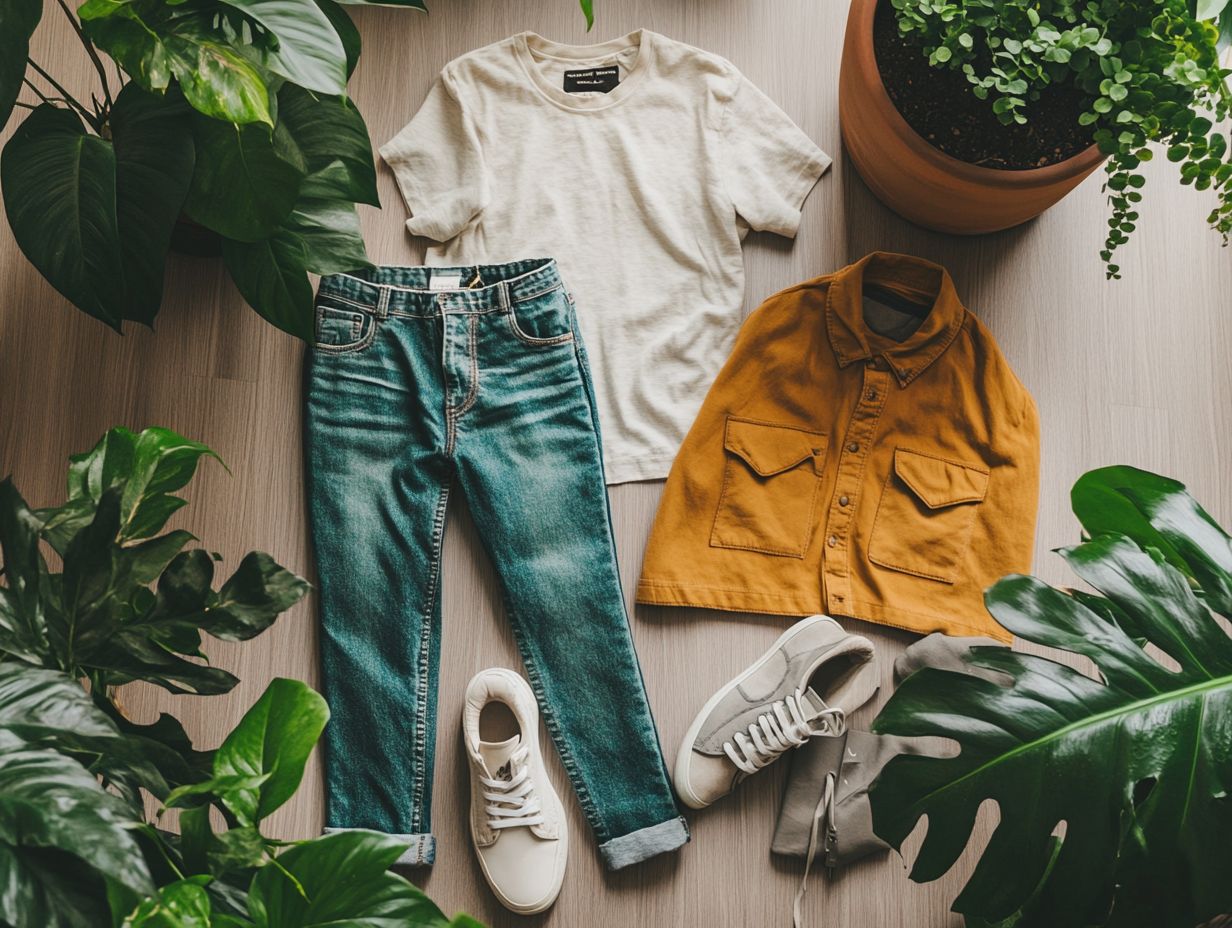
Building a sustainable wardrobe starts with choosing essential clothing items that resonate with your personal style while embodying sustainable practices. Focus on garments that are durable and multifunctional.
Choose versatile, high-quality pieces that withstand changing fashion trends. This approach not only supports responsible consumption but also ensures that your clothing investments are both smart and enduring. To help with this, learn how to identify your essential clothing needs.
Basic Pieces for Versatility and Longevity
When you re building a sustainable wardrobe, it s crucial to focus on basic pieces that offer both versatility and longevity. These garments serve as the backbone of your sustainable fashion strategy.
Select classic tops like tailored T-shirts and button-downs, along with timeless bottoms such as well-fitted jeans and versatile skirts. This ensures your outfits are suitable for a variety of occasions. For more insights, check out wardrobe essentials every minimalist needs. Layering with outerwear pieces, like denim jackets or structured blazers, enhances the adaptability of these staples.
Each choice plays a significant role in reducing the impact of clothing on the environment, highlighting the importance of garment care to extend their lifespan.
In doing so, you can effectively calculate the cost-per-wear (the total cost of an item divided by how often you wear it), empowering you to make more informed and sustainable purchasing decisions while cultivating a wardrobe that not only looks fabulous but also aligns with your eco-conscious values.
Eco-Friendly Materials to Look For
Choosing eco-friendly materials is essential for building a sustainable wardrobe, as these fabrics significantly cut down the carbon footprint linked to clothing production. By opting for materials like organic cotton, Tencel, and recycled fibers, you can directly support sustainable fashion initiatives and promote accountability within the fashion industry.
These materials enhance your wearing experience due to their durability and breathability. Sustainable brands are increasingly incorporating these fabrics into their collections, responding to the rising demand for ethical fashion.
Take organic cotton, for example; it s grown without harmful pesticides, making it a safer choice for both farmers and the environment. Tencel, on the other hand, is derived from sustainably sourced wood pulp and boasts excellent moisture-wicking properties, perfect for your activewear needs.
As fashion trends shift toward greater environmental awareness, incorporating these materials into your everyday wardrobe not only elevates your personal style but also contributes to a more responsible fashion ecosystem. For those looking to refresh their style, exploring essential clothing items for transitioning seasons can be a great start.
Tips for Building a Sustainable Wardrobe
Act now to build a sustainable wardrobe! Your choices today can make a huge difference. Building a sustainable wardrobe requires your thoughtful choices. Embrace conscious shopping habits that prioritize sustainability.
This journey involves understanding the lifecycle of garments, investing in quality pieces, and practicing proper care to extend the life of each item.
By doing so, you not only enhance your wardrobe but also embrace minimalist wardrobe essentials for minimalists that contribute positively to the environment.
How to Shop Consciously

Shopping consciously means making thoughtful choices that prioritize sustainable brands and ethical clothing. This allows you to reduce your environmental footprint while supporting the fashion industry’s shift towards sustainability.
By evaluating your shopping habits and focusing on the durability of garments, you can create positive clothing habits that truly reflect your values!
To truly enhance your conscious shopping experience, dive deep into researching brands. Understanding their ethical practices and labor policies is crucial; look for transparency and a genuine commitment to accountability in fashion.
Platforms like Vinted and Depop are invaluable resources for sourcing second-hand clothing. These platforms enable you to extend the lifecycle of garments and minimize waste. Not only does this practice lead to unique fashion discoveries, but it also fosters a more sustainable approach to consumerism.
You can refine your shopping decisions by understanding the environmental costs of materials and production processes. This knowledge gives you the power to make informed choices that reflect your dedication to sustainability.
Caring for Sustainable Clothing
Proper garment care is key to maintaining sustainable clothing. It extends the lifecycle of your pieces and reduces the need for constant replacements. By adopting sustainable practices like:
- Washing in cold water
- Air drying
- Repairing items
You can make a significant impact on fashion sustainability and help minimize clothing waste by incorporating must-have essentials for your minimalist wardrobe.
A discerning approach to quality versus price is vital. While opting for higher-quality garments may require a larger upfront investment, it often results in longer-lasting pieces that don t need to be replaced as frequently. In the long run, this smart choice saves you money and lessens your environmental footprint.
Engaging in garment repairs instead of tossing out worn-out clothing nurtures a culture of sustainability. This honors the resources that went into creating each piece. These mindful practices not only elevate your wardrobe but also empower your community to embrace more environmentally responsible fashion choices that include key pieces for a functional minimalist wardrobe.
Transitioning to a Sustainable Wardrobe
Transitioning to a sustainable wardrobe is an empowering journey that invites you to reassess your clothing choices and embrace more conscious consumption patterns.
By conducting a wardrobe inventory to check your clothing closet and integrating sustainable fashion principles, you can beautifully align your personal style with a commitment to environmental accountability and social responsibility. Additionally, consider exploring the most versatile items for capsule wardrobes to enhance your fashion choices.
Steps to Take for a More Sustainable Closet
Creating a more sustainable closet requires you to take intentional steps to evaluate and enhance your clothing habits. This leads to a reduced environmental impact and a more sustainable wardrobe. A wardrobe audit is a fantastic starting point, allowing you to identify pieces that no longer serve you and prioritize high-quality, versatile items.
By thoughtfully considering each piece, you can assess its role in the overall clothing lifecycle and its contribution to fashion accountability. After your audit, donating or recycling unwanted garments extends their life and mitigates the societal costs associated with fast fashion waste.
Investing in sustainable brands that prioritize eco-friendly materials and fair labor practices supports a more ethical industry. Embracing second-hand clothing is a powerful way to enhance sustainability. It reduces the demand for new production and breathes new life into existing pieces, ultimately fostering a circular approach to fashion.
Frequently Asked Questions
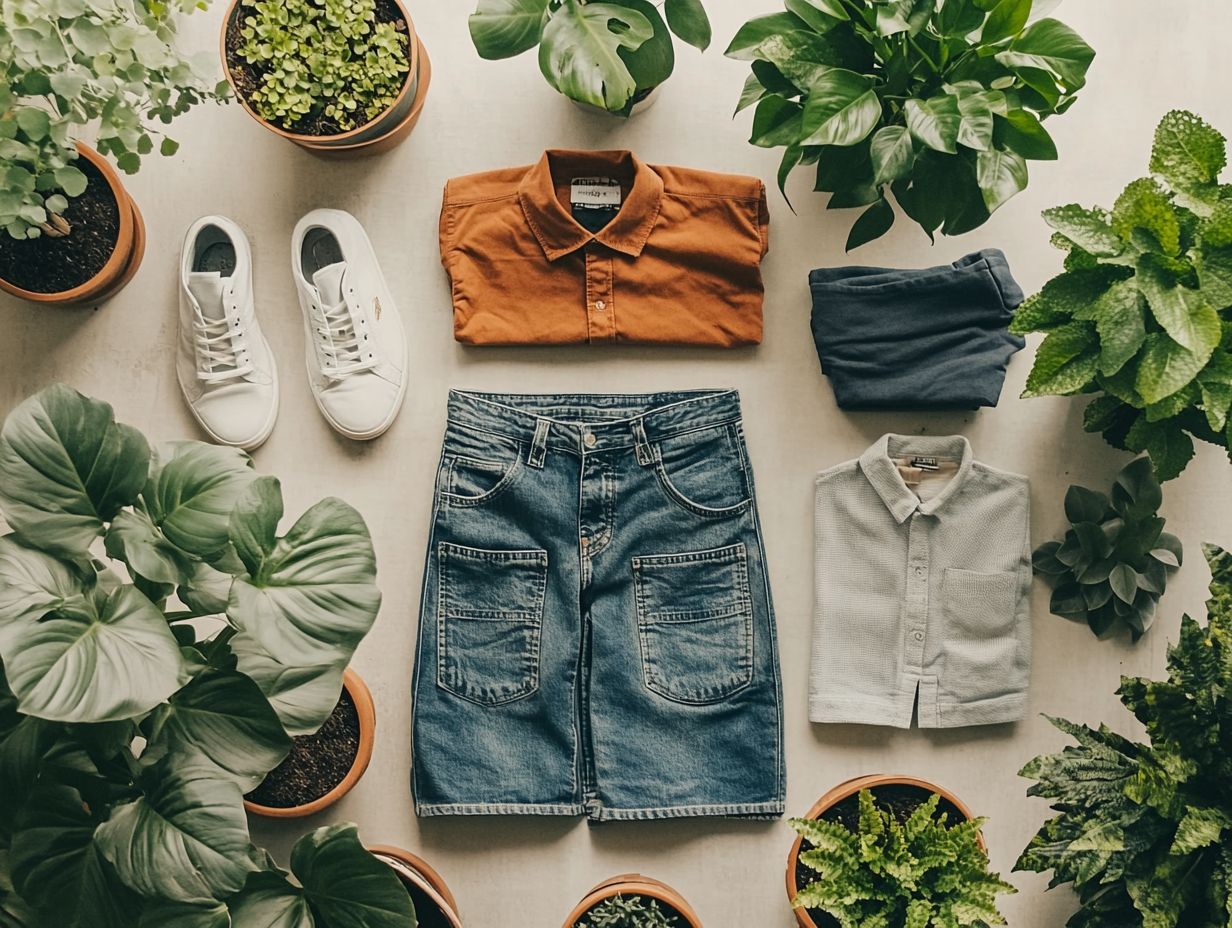
What are the must-have sustainable clothing items?
Essential clothing items for sustainable wardrobes are pieces that are made from sustainable and eco-friendly materials, have a timeless style, and can be worn multiple times in different ways.
Why is it important to have sustainable clothing in our wardrobes?
Sustainable clothing is made from environmentally friendly materials and reduces waste. It also supports ethical labor practices in the fashion industry.
What are some examples of essential clothing items for sustainable wardrobes?
Some examples of essential clothing items for sustainable wardrobes include organic cotton t-shirts, polyester made from recycled materials, linen dresses, and sustainably sourced wool sweaters.
How can I incorporate essential clothing items for sustainable wardrobes into my current wardrobe?
Start by investing in a few key pieces. Gradually replace fast fashion items with more sustainable options. You can also thrift or swap clothes with friends to save money and reduce waste.
What are some sustainable materials to look for in clothing?
Sustainable materials to look for in clothing include organic cotton, bamboo, Tencel, recycled polyester, hemp, and linen. These materials are environmentally friendly and have a lower impact on the planet.
Can sustainable clothing be stylish and trendy?
Absolutely! Sustainable clothing can be incredibly stylish and trendy. Many brands offer modern designs that are both fashionable and eco-friendly. Mix and match sustainable pieces with what you already own to create unique outfits!
